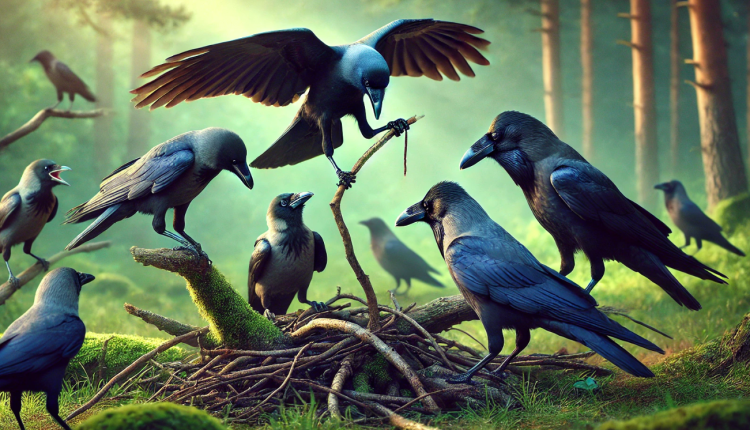The Enigmatic Intelligence of Crows: Unveiling the Cognitive Marvels of Corvids
Crows, members of the corvid family, have long fascinated humans with their remarkable intelligence and complex behaviors. These avian marvels exhibit cognitive abilities that rival those of primates, challenging our understanding of animal intelligence. This article delves into the intricate world of crows, exploring their problem-solving skills, social structures, communication methods, and cultural significance.
Cognitive Prowess: Problem-Solving and Tool Use
Crows are renowned for their exceptional problem-solving abilities. Studies have demonstrated that they can perform tasks requiring advanced reasoning, such as understanding causality and planning for future events. One notable example is the New Caledonian crow, which crafts and uses tools to extract insects from tree bark. These crows fashion sticks into hooks, a behavior previously thought to be exclusive to humans and certain primates.
In controlled experiments, crows have been observed solving complex puzzles that involve multiple steps and the use of tools. For instance, they can manipulate objects to access food rewards, showcasing an understanding of cause-and-effect relationships. Such behaviors indicate a level of cognitive sophistication that challenges traditional views of avian intelligence.
Social Dynamics and Cooperative Behaviors
Crows live in intricate social structures that require advanced communication and cooperation. They form tight-knit family units and engage in collective activities such as hunting and defending territory. Research has shown that crows can recognize individual human faces and remember them for extended periods, responding differently to those who have posed threats in the past.
These birds also exhibit behaviors indicative of empathy and consolation. Observations have recorded instances where crows console their peers after conflicts, a trait that suggests a complex emotional life. Such social intricacies highlight the depth of their cognitive and emotional capacities.
Communication: A Complex System of Signals
The communication methods of crows are multifaceted, involving a range of vocalizations and physical gestures. They use specific calls to convey information about food sources, predators, and social interactions. Some studies suggest that crows possess regional dialects, with variations in calls observed among different populations.
Beyond vocalizations, crows employ body language to communicate. Postures, wing movements, and facial expressions play roles in conveying intentions and emotions. This combination of vocal and non-vocal communication underscores the complexity of their social interactions.
Cultural Transmission and Learning
Crows demonstrate the ability to learn from one another, leading to the development of cultural behaviors. For example, certain feeding techniques or tool-use methods are passed down through generations, not by genetic inheritance but through social learning. This cultural transmission allows crows to adapt to changing environments and challenges.
In urban settings, crows have been observed using traffic to crack open hard-shelled nuts. They place the nuts on roads and wait for cars to crush them, then retrieve the contents once the traffic subsides. Such innovative behaviors spread through crow populations, illustrating their capacity for learning and adaptation.
Crows in Human Culture: Symbolism and Perception
Throughout history, crows have held significant places in human culture and mythology. Often associated with omens or the supernatural, they appear in various cultural narratives worldwide. In some traditions, crows are seen as symbols of death or misfortune, while in others, they represent wisdom and transformation.
The complex relationship between humans and crows reflects our recognition of their intelligence and adaptability. As we continue to study these birds, our appreciation for their cognitive abilities deepens, challenging us to reconsider our perspectives on animal intelligence.
Conservation and Coexistence
Understanding the intelligence and social structures of crows has implications for their conservation and our coexistence with them. As adaptable as they are, crows face threats from habitat loss and human-wildlife conflicts. Recognizing their cognitive and emotional capacities can inform more compassionate and effective conservation strategies.
In urban areas, fostering coexistence involves appreciating the ecological roles crows play, such as controlling insect populations and cleaning up carrion. By acknowledging their intelligence and right to inhabit shared spaces, we can develop harmonious relationships with these remarkable birds.
Conclusion
Crows stand as a testament to the profound intelligence and adaptability present in the avian world. Their problem-solving skills, complex social interactions, and cultural behaviors offer valuable insights into the cognitive landscapes of non-human animals. As we continue to explore and understand the enigmatic intelligence of crows, we not only gain knowledge about these remarkable creatures but also reflect on the broader spectrum of intelligence in the animal kingdom.

